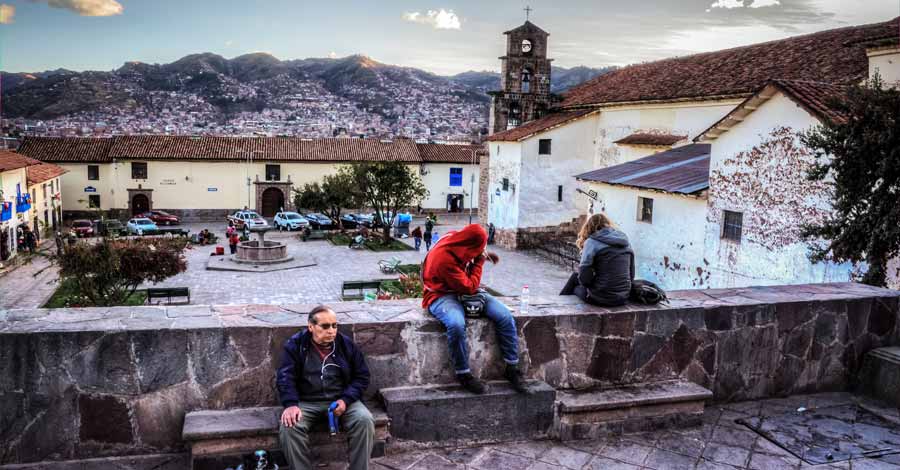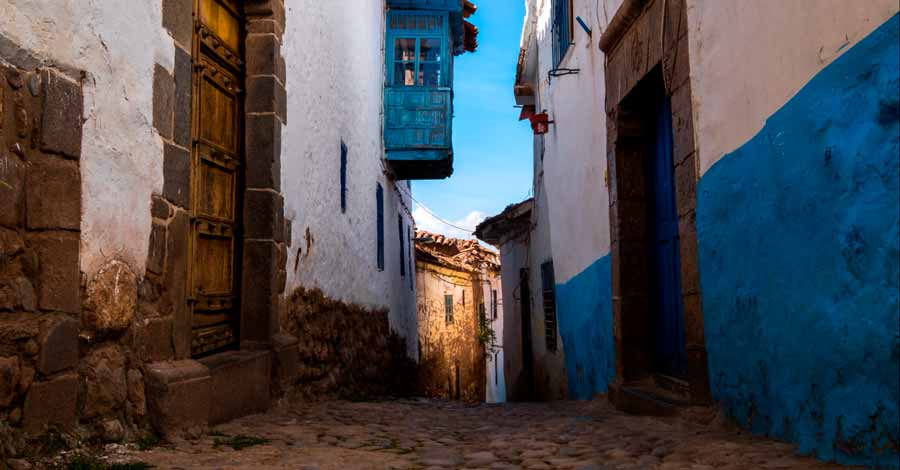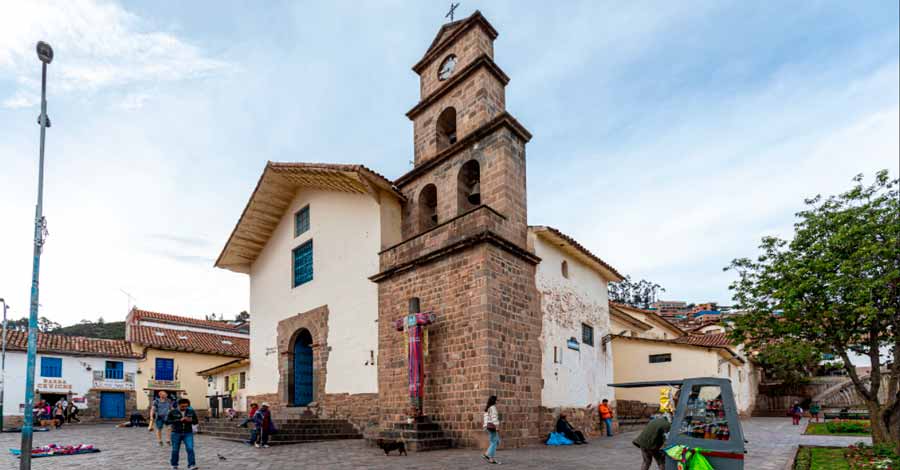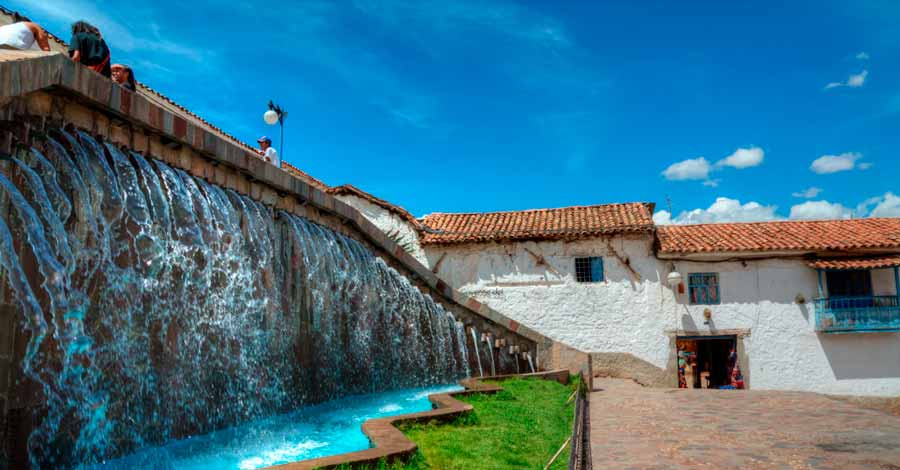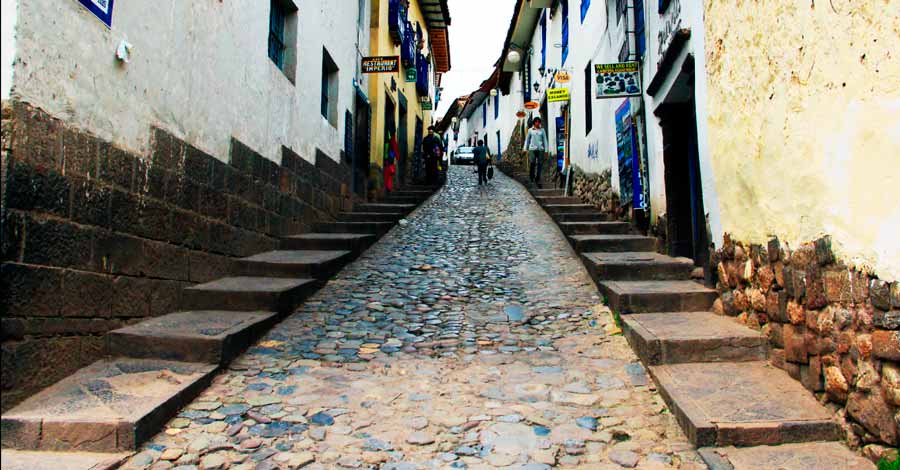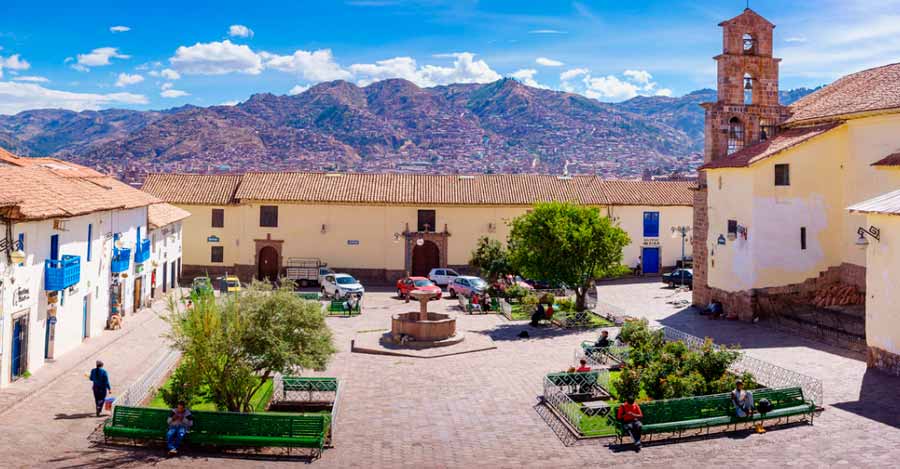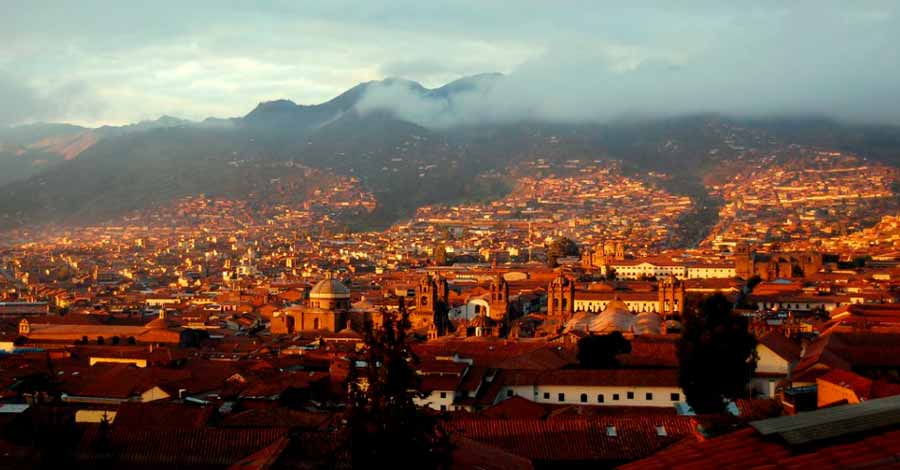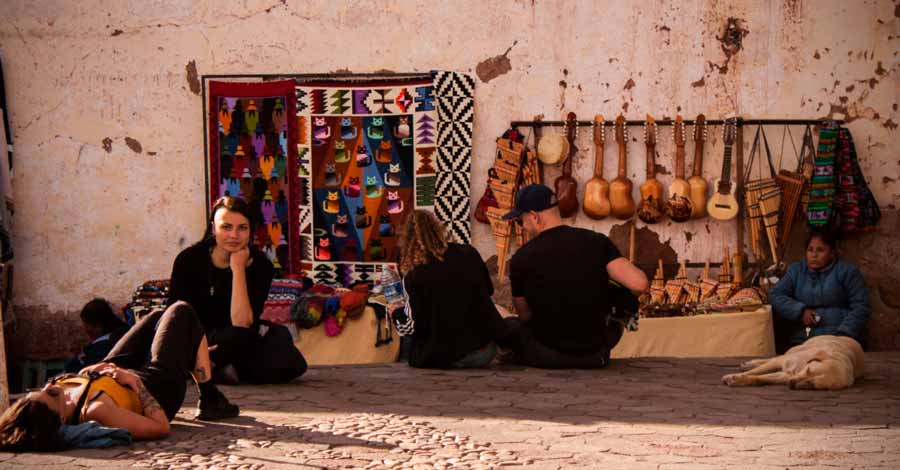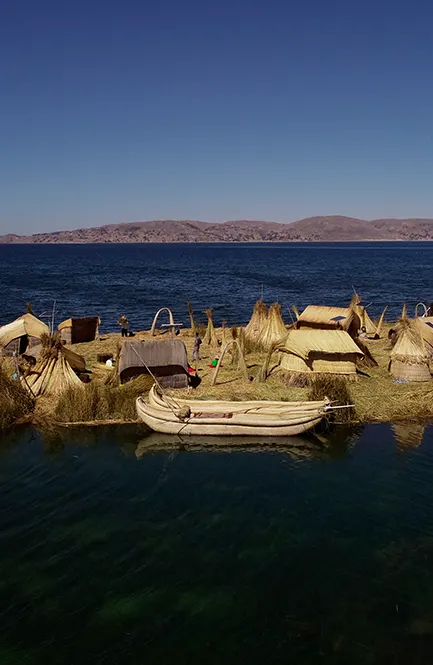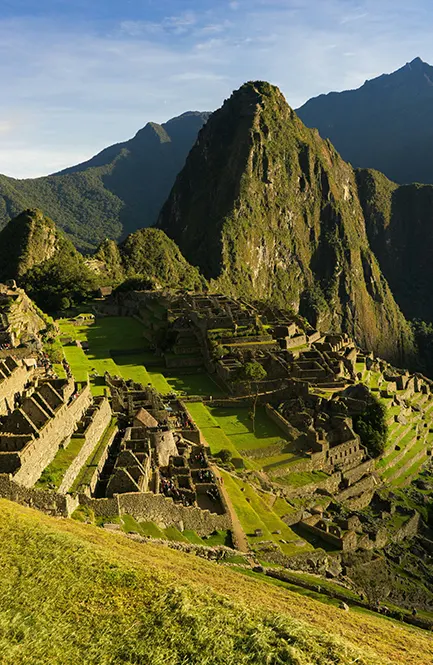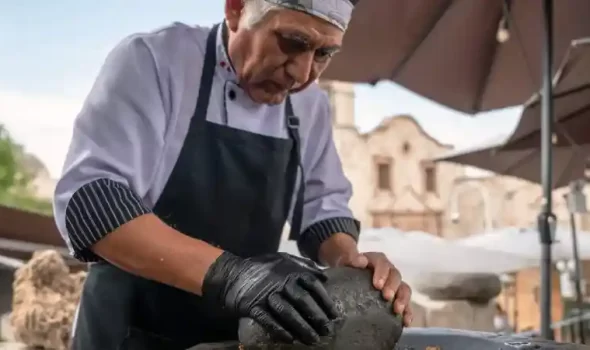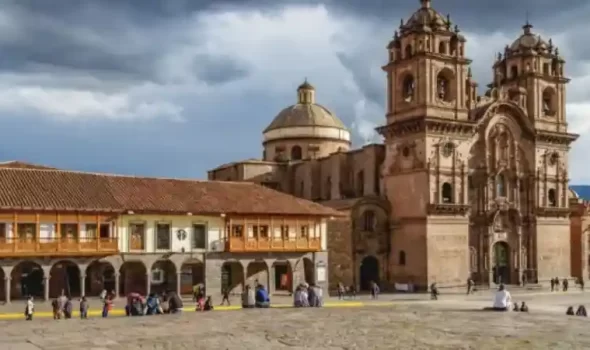San Blas Cusco is located in the old Inca neighborhood of T’oqocachi. A multicolored neighborhood of great tradition. Here you will find the best master craftsmen, goldsmiths, sculptors and painters. The neighborhood of San Blas Cusco is one of the mandatory places to visit in the city known as the navel of the world.
Accompany Auri to explore one of the most emblematic and beautiful traditional neighborhoods of the city of Cusco and Peru.
Where is the neighborhood of San Blas Cusco?
The neighborhood of San Blas is located northeast of the main square of Cusco, on the slopes of a rocky hill called Socorropata. In this neighborhood is the famous church of San Blas. The neighborhood is about 10 minutes walk from the main square and across the famous street of Hatunrumiyoc, the street that contains the twelve angles stone.
History of San Blas neighborhood in Cusco
The neighborhood of San Blas was called Tokocachi in Inca times, this name translates literally as hollow or salt cave. In this sector there was, at ground level, a hole from where a small salt water spring gushed. Even today, San Blas exhibits remains of walls or other Inca units along many of its streets. Some streets like the San Blas slope and Tandapata street were part of the real trail to Antisuyo, one of the four regions of the Inca empire.
Going back to the history of the place, San Blas has antecedents of occupations previous to the Incas. The chronicle of Pedro Cieza de León indicates that this place was inhabited by the Wallas ethnic group of Aymara origin, that is to say, towards the Peruvian-Bolivian altiplano. There is also physical evidence of cultivation terraces of possible origin of a local culture, the Killke culture.
There is not much information about the characteristics of the initial settlement. The chroniclers gave very little importance to the peripheral neighborhoods with respect to the main area of the great Inca city that was Inca Cusco. A possible paccha or fountain must have existed in the place now occupied by the water fountains of the San Blas square.
The chronicler Bernabe Cobo narrates that in the area of Tokocachi there was also a temple dedicated to Illapa, Andean god formed by thunder, lightning and lightning. Illapa was represented by a golden statue built during the rule of the Inca Pachacutec.
When Spaniards arrived, the corregidor Polo de Ondegardo found the mummy of the Inca Pachacutec inside this temple. It is probable that the temple would have been located where the current temple of San Blas was erected. It is said that the temple was built around 1562 by the corregidor Polo de Ondegardo and by provision of the viceroy Hurtado de Mendoza.
Another version indicates that the temple was built in 1544, during the period of the second bishop of Cusco, Fray Juan Solano.
At the end of the XVI century and the beginning of the XVII century, this neighborhood of Cusco had already been occupied by Spaniards, maintaining also the natural settlers of the place. At that time a list or census of the inhabitants of the place was made by the visitor Sancho Verdugo, determining that this neighborhood was inhabited by 1136 Indians domiciled.
Later in 1689, by order of the bishop of Cusco, Manuel Mollinedo y Angulo, a report was written about the existence of four ayllus: Hatun Ayllu incacona, Ayllu Capac, Ayllu Urinqosqo and Ayllu collana.
By the last third of the seventeenth century, with the process of urban growth of the city, San Blas became a neighborhood specializing in craft and trade activities, activities that continued until the beginning of the republic and even today. Today San Blas is a neighborhood that deeply maintains its tradition, where we highlight its skilled artisans.
The San Blas church in Cusco
The temple of San Blas or San Blas church is a structure on stone steps with adobe walls and ceramic tile roofing. After the terrible earthquake of 1650, the walls were partially reinforced with stone walls. To the side of the temple there is a baptistery and a group of altarpieces attached to the main body of the nave. Towards the nave of the epistle there is a belfry tower.
At the foot of the tower there is a stone atrial cross; a symbolic element of great importance, especially in the month of May
Inside the church is one of the greatest jewels of colonial art in the continent: the Pulpit of San Blas, which is filigree made in cedar by expert hands in the handling of the gouge. It is not known with certainty who executed it, how long the work took, nor many other details of it; however, the pulpit is there as a silent witness of a great devotion and dedicated work.
There is enough evidence to affirm that it was ordered to be made with the peculium of the patron Bishop Manuel Mollinedo y Angulo towards the end of the XVII century; there are serious discrepancies as to the identity of the executing artist. Many claim that it was the work of the most famous Quechua carver and assembler Juan Tomás Tuyro Tupaq.
What is the San Blas neighborhood famous for?
San Blas is a very emblematic and traditional neighborhood of Cusco, certainly one of the oldest. Its streets are narrow and beautifully cobbled. It has very favorable natural conditions because it has abundant water from different springs. San Blas rises higher than the historic center of the city of Cusco and gives us a spectacular view of the entire valley of Cusco, it is as if the neighborhood of San Blas was a balcony.
In San Blas Cusco, we find colonial houses that house many of the best workshops and art stores, this is because San Blas is home to ancient families dedicated to popular crafts. It is a highly touristic neighborhood that houses restaurants of typical Cusquenian food in its streets and many hotels of great hierarchy.
What to visit in the neighborhood of San Blas?
Cuesta de San Blas│San Blas slope:
If you come from the Plaza de Armas, the first thing you will find is the famous Cuesta de San Blas, a sort of summary of what awaits you in this picturesque neighborhood.
Galleries and workshops in San Blas:
Precisely on the slope of San Blas or «Cuesta de San Blas» you will find numerous galleries and workshops of important Cusquenian artists. In them, you can appreciate their works and also buy the one you like the most (there are prices for all budgets!).
San Blas square:
At the end of the Cuesta de San Blas is the San Blas square, a small corner where you can sit and rest after climbing this steep street. Here you can visit two of the great attractions of this neighborhood, the gallery of Hilario Mendivil and the Temple of San Blas.
Gallery of «Hilario Mendivil y Familia»:
Hilario Mendivil is one of the maximum representatives of Cusquenian handicrafts. His work, which was developed during the 20th century, stands out for the religious images with elongated necks that resemble those of the llama and the alpaca, very representative animals of the Andes.
Temple of San Blas:
One of the great jewels of the colonial architecture of this neighborhood is the Temple of San Blas. This church, which was built over an Inca huaca and later rebuilt in 1650 after an earthquake.
San Blas viewpoint:
to end the day, nothing better than going up to the Mirador de San Blas and enjoy a beautiful sunset with one of the best panoramic views of Cusco.
How to get to the neighborhood of San Blas?
As we have mentioned, the neighborhood of San Blas is located 10 minutes walking distance from the main square of Cusco. The access to the neighborhood is through two main axes:
- Cusco’s main square, Triunfo street, Hatunrumiyoc street and Cuesta San Blas/San Blas slope (This is the ancient Inca road to the Antisuyo region).
- The next axis to get there is from the main square of Cusco, Cuesta del Almirante, Córdoba del Tucumán street and Siete Culebras street.
San Blas is therefore the neighborhood of the artists, there were born and lived the most skilled artisans that has given the city of Cusco. It is one of the most picturesque and cozy places in Cusco with narrow and winding streets with unique names. Peru has many incredible places to discover, Auri Travel will be happy to help you with your travel plans to Peru Come and enjoy an unforgettable adventure with us!



